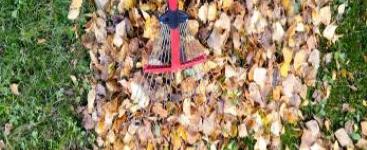
Lawn Care Tips For New Homeowners
Owning a home can be a huge investment. But it’s important to keep up with maintenance tasks so that you don’t have to spend extra money later on.
Taking care of your lawn is one of the most important parts of maintaining a beautiful property. These lawn care tips will help you make sure your yard is in tip-top shape and ready for whatever the season throws at it.
Set a Lawn Care Schedule
Lawn care is a big part of maintaining a healthy lawn. It involves a series of treatments and maintenance tasks that vary depending on the season and climate of your region.
Creating a lawn care schedule can help homeowners take control of their lawns and achieve a lush, green look that is healthy and attractive to the eye. A schedule can also help homeowners stay consistent with their lawn care efforts and prevent weeds and other issues from affecting their lawns.
To create a schedule for your lawn, you must first understand your yard’s unique needs and desired results. Once you have identified these factors, you can create a schedule that meets those requirements and is tailored to your lifestyle.
Setting a lawn care schedule requires commitment and discipline, but it is a necessary step in creating a healthy, beautiful lawn. Many homeowners don’t realize that achieving a golf course-quality lawn takes more than just regular mowing and watering.
It’s also essential to use the right fertilizer, weed control products, and other lawn care tools at the appropriate time. For example, applying a lawn fertilizer at the wrong time can result in an uneven color and weaken your grass.
For the best results, it is important to perform a soil test before applying any fertilizer or other treatment. This will allow you to know which type of fertilizer is right for your lawn and determine the timing of the application.
In addition, it’s important to monitor your lawn’s progress and make adjustments as needed. This can include adjusting the frequency of mowing, adding a new treatment, or changing the dosage of a treatment.
Spring is a great time to fertilize and aerate your lawn. This will help your grass grow stronger, deeper, and more resistant to weeds. It will also prepare your lawn for the upcoming summer heat and other stressors.
This is the best time to rake and remove leaves from your lawn, as well as to cut down on the number of sticks and small branches that may be lying around on your lawn. These are all things that can damage your grass and cause problems in the future.
Get Rid of Weeds
Weeds can be a pain, but there are ways to eradicate them without resorting to harsh chemicals. In fact, weeding your garden can be a lot of fun if you use the right tools and techniques.
The first step is to understand what kind of weeds you have in your garden. This will help you decide whether or not to treat them with a commercial weed killer.
If you're going to tackle weeds on your own, here are some tips to help you get started:
Mulch is one of the easiest and most effective ways to control weed growth. Spread three inches of mulch over your garden beds, and you'll see a reduction in the amount of weeds that grow.
A layer of biodegradable mulch, such as compost, wood chippings, processed bark or leaf mold, can suppress weeds while also providing valuable nutrients for your plants. However, these materials won't kill weeds once they have established themselves in the soil, so make sure you remove them before you apply the mulch.
Another way to prevent weeds from forming in your lawn is to sow cover crops during the growing season. Rye grass, winter wheat or oats are ideal for this purpose.
Weeds need moisture to survive, so if you have dry areas in your yard, such as bare soil or pathways, add a bit of water to it. This will dehydrate the weeds, and they won't be able to grow.
Alternatively, you can spray water onto weeds to help them wither and die. This works well if you have a lot of weeds that you need to kill quickly, but it can be diluted by rain, so spraying a thin layer is recommended.
You can also try pouring bleach on weeds to help them dry out and die. However, this can damage your desired plants, so be careful when using it.
If you want to use a more traditional method, you can pour boiling water on the weeds and let it burn them. This can be an effective weed killer but is not suitable for children or pets, so it's best to wear protective clothing.
Fertilize
Whether you’re a new homeowner or you’re a long-time gardener, fertilizing your lawn is essential for a lush, healthy look. Lawns need nitrogen to grow and thrive, but they also need other key nutrients to help them resist drought and disease.
Nitrogen promotes leaf growth and increases chlorophyll production, which helps your lawn photosynthesise the energy it needs to grow. Phosphorus helps plants develop strong roots and stems, and potassium strengthens the grass’s resistance to disease.
There are many different types of fertilizer, and you need to be sure you choose the right one for your lawn. Most are made of three main components: Nitrogen, phosphorus, and potassium (N-P-K).
The number on the label is how much of each of these nutrients the product contains. For example, Scotts Turf Builder is 32-0-4, which means it has 32% nitrogen, 0% phosphorus, and 4% potassium.
It is important to do a soil test to determine what nutrients your soil lacks before applying fertilizer. A good test kit can be found at a garden store or online, and it takes samples of the soil from several spots around your yard.
Once you have the results from your test, you can purchase a fertilizer that is right for your soil type and needs. Keep in mind that it’s not always easy to tell exactly what your lawn needs because it varies by season and weather conditions.
Another factor that can affect the outcome of your fertilization is how you apply it. You don’t want to over-fertilize, or you may cause burns on your lawn. To avoid this, start by using the spreader on a low setting and slowly walking across the entire area.
You can even lower the spreader and divide your lawn into sections to apply fertilizer more evenly. By following these simple steps, you can ensure a beautiful, thick lawn.
You can also save time by buying pre-made granules and putting them in a spreader to apply. This is ideal for homeowners who don’t have time to spend a lot of time out on their lawn.
Aerate
Lawns need all the help they can get, and aeration is one of the best ways to improve your yard. Aerating your soil can make a big difference in the appearance of your lawn, and it can also help stimulate root growth. Aeration is especially important if you live in a climate where your lawn receives less than ideal rainfall. The process involves removing plugs of soil to increase the amount of air, water and nutrients your turf can absorb. Ideally, you should aerate your lawn at least once per year to keep it looking its best. If you can only aerate your lawn once or twice a year, the rest of the time should be dedicated to other lawn care tasks such as weeding, fertilizing and mowing. Fortunately, aeration isn’t hard to schedule, and it can even be done during off-peak hours. The best time to aerate your lawn is during the spring or fall.

Lawn Mowing
We service both Commercial and Residentual clients

Lawn Care
We offer weed whipping, edging, hedging, pruning & mulching services.

Spring & Fall Cleanup
Need your yard and property cleaned-up for the spring or fall? Call us today!

Snow & Ice Removal
Snow and Ice removal services can be customized to fit your level of need.